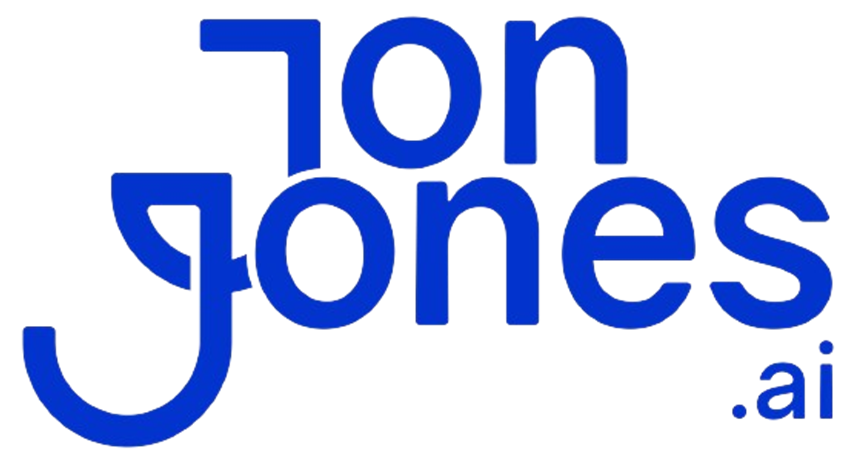Ever felt like you’re shooting marketing arrows blind? You’re not alone – most campaigns still feel like guesswork. Predictive analytics (an algorithm that forecasts outcomes) taps past and real-time customer data to predict which ads will land.
In this post, we’ll share five analytics tricks that help you:
- Reallocate ad spend toward audiences most likely to convert.
- Rank leads by readiness with lead scoring (a simple way to spot hot prospects).
- Tweak campaigns on the fly based on live results.
- Personalize messages at scale as easily as setting up your morning coffee maker.
- Run A/B tests (two-version tests) backed by real forecast numbers.
Nice.
Ready? Let’s dive in.
Predictive Analytics Marketing Fundamentals

Ever feel like you’re flying blind with your marketing budget? Predictive analytics in marketing uses past and live data to forecast campaign wins and customer decisions. It covers four key analytics types:
- descriptive analytics (shows what happened)
- diagnostic analytics (explains why it happened)
- predictive analytics (tells you what’s next)
- prescriptive analytics (recommends your next move)
So how do we make it work for you? We pull data from your CRM (customer relationship management system), website stats, and sales logs. Then we clean it up and guide every dollar so you spot underperformers early, and move budget before it drips away.
Key advantages you’ll see:
- Budget goes to top audiences, not gut-feel bets
- Leads get scored smarter so sales chase buyers ready to buy
- Campaigns adjust on the fly with live data signals
- Messages feel personal at scale by predicting what customers want
- Testing speeds up and risk drops thanks to model-driven A/B tests (split tests comparing two versions) and forecasted ROI
When you bring predictive analytics on board, you shift from reacting to trends to anticipating them. You’ll cut wasted spend, lift conversions, and keep customers coming back, all while keeping ROI front and center. About 80 percent of U.S. retailers using AI already lean on these techniques to hit growth targets. And by retraining our models regularly, we keep your forecasts sharp as buyer habits change.
Core Predictive Analytics Algorithms for Marketing

Predictive marketing analytics uses four core methods to turn your raw data into clear, actionable steps. Each method answers a key question: Will a lead convert? How big could a deal get? Which group does a contact fall into? You mix and match these tools to run smarter campaigns and stretch your ad budget further.
Regression Analytics
Regression analysis (a method that finds trends in numbers) helps you forecast revenue and deal size. We feed past sales, deal values, and ad spend into a regression model (an equation that predicts a number) so you can see which activities drive growth. Teams use this to set achievable goals and spot when forecasts drift off track.
Classification Models
A classification model (an algorithm that sorts items into categories) predicts things like conversion likelihood or churn risk. It learns from past customer actions and traits, then gives each lead a probability score, say, 0.85 for “likely to buy.” You’ll fast-track high-scoring leads to sales and win back at-risk customers before they slip away.
Clustering Techniques
Clustering (an algorithm that groups similar data points) slices your database into segments based on shared traits, purchase history, page views, or company size. It uncovers niche pockets you might miss, like frequent buyers who never click your emails. That lets you craft messages that really hit each group’s sweet spot.
Neural Network Methods
A neural network (a multi-layer algorithm that mimics brain connections) digs into complex, nonlinear patterns that simpler models can’t catch. It spots subtle signals, like a browsing habit linked to big-ticket purchases. Use neural networks when you’ve got large datasets and need deep, fine-grained insights.
| Algorithm | Use Case | Strengths | Considerations |
|---|---|---|---|
| Regression Analytics | Forecasting revenue and deal size | Clear numerical predictions; easy to explain | Assumes linear relationships; sensitive to outliers |
| Classification Models | Conversion likelihood and churn risk | Actionable scores; supports decision thresholds | Needs balanced classes; potential bias |
| Clustering Techniques | Audience segmentation | Reveals hidden groups; no pre-labeled data needed | Picking the right number of clusters can be tricky |
| Neural Network Methods | Detecting complex patterns | Captures nonlinear relationships; high accuracy | Requires large datasets; results can be hard to explain |
5 Predictive Analytics in Marketing Spark Higher ROI

Predictive analytics (using past data to forecast outcomes) gives you a clear roadmap, not guesswork. We analyze old campaign numbers and live signals to spot which ads and channels drive the biggest return.
And smart A/B testing (comparing two versions) powered by predictive models (algorithms that forecast results) means you’re not picking winners by gut feel. The model flags which subject lines, creative designs, or landing pages should get most of your budget before you spend a single dollar.
Our optimization tactics shift your ad spend on the fly toward high-converting audiences. That saves you from throwing money at ads that fall flat.
Next, we’ll automate the heavy lifting so you never miss a beat. Email sequences fire when a lead shows buying intent, like reading three product pages in under five minutes. And display ads swap in the next best offer when someone skips your first ad.
Those automated workflows free you from manual tagging, scheduling, and retargeting. We set up simple triggers that follow each contact’s unique path and nudge them toward a purchase at just the right moment. Nice.
Finally, real-time intelligence tools let you tweak offers and bids as signals roll in. Imagine algorithms (step-by-step rules) that raise bids automatically when a lead visits your pricing page.
Or a dashboard lighting up with cross-channel attribution so you see which touchpoints really moved the needle. You’ll spot live trends, like sudden interest in a new feature, and optimize impressions across email, social, and paid search. Pair dynamic targeting algorithms with instant feedback loops, and every campaign becomes a well-tuned engine for boosting ROI.
Segmentation and Personalization through Predictive Analytics

Predictive marketing (using data to forecast customer actions) lets us slice your audience into clear groups. We run clustering (grouping similar behaviors) on purchase history, email opens, and browsing habits.
From that, we spot:
- Top fans who love your brand
- First-time buyers giving you a shot
- Cold leads ready for a win-back nudge
Then we add retention analytics (tracking who’s about to bail) to flag folks drifting away, like readers who used to click but now ghost your emails. With segments mapped, you know exactly what message to send, when, and to whom. And as habits shift, we refresh those clusters automatically so your groups stay up to date.
Next, we turn those segments into personal journeys using machine learning (an algorithm that learns from data). Our models serve one-to-one product picks, like suggesting a case after someone buys a phone or reminding them to restock supplies. Your emails, ads, and push notifications update in real time to match each person’s tastes.
We also tap sentiment analysis (gauging tone in text) on reviews and social chatter to tweak outreach. The result? Messages that feel handpicked, higher open and click rates, and a smoother path from interest to purchase. Plus, you can set up automated triggers for reactivation campaigns aimed at at-risk segments or special VIP loyalty offers.
Forecasting Customer Churn and Lifetime Value

Predictive analytics (an algorithm that forecasts trends) lets us spot who might churn (leave) before they do. We feed in past purchases, engagement history, and support tickets to train our churn model (an algorithm that predicts if someone will stop using your service). At the same time, we calculate each customer’s lifetime value (LTV, a forecast of future spending) so you know which folks deserve your best offers. That way, you can reach out early to save at-risk customers and invest your marketing budget in your most loyal fans.
Churn Modeling Techniques
We build a churn model that flags customers heading for the exit. We train it on simple signals, how often they log in, gaps between purchases, even support requests. When someone’s risk score climbs, you can send a targeted win-back email or hop on a quick call. Early nudges like these help you snatch customers back before they slip away. Results matter. Fewer surprises and better retention start here.
Customer Lifetime Value Estimation
Customer lifetime value (LTV, a forecast of total spend over time) shows which customers drive the biggest profits. We gather each person’s order size, repeat-buy rate, and product mix, then feed those into a regression model (an algorithm that predicts numbers) to estimate future spend. Next, we rank customer segments by potential value so you know where to focus loyalty perks and promotions. We also layer in propensity scoring (a guess at the chance of a specific action) to spot who’s ready to buy a second product or upgrade. That way, your cross-sell and upsell campaigns hit the mark every time.
Selecting Predictive Analytics Software for Marketing

Predictive analytics (an algorithm that forecasts outcomes) helps you see what’s coming next. To choose the right software, we start with your core needs: reliable forecasts, plug-and-play marketing automation, and iron-clad data privacy. Nice.
Commercial platforms like Salesforce Einstein and HubSpot Analytics come with ready-made dashboards, built-in lead scoring, and vendor support. Open source tools, think Facebook Prophet and H2O.ai, let you customize models without license fees. But you’ll need developer time to set them up and keep them humming. To compare features and total cost of ownership, check predictive analytics software.
Integration is nonnegotiable. You want live data from your CRM (customer relationship management system), email software, website analytics, and ad channels all in one spot. Okay, let’s break that down:
- Standardize field names.
- Clean your data with strict rules.
- Automate syncs for fresh, accurate training data.
Cloud platforms also help you check GDPR (European data law) and CCPA (California privacy law) boxes with built-in encryption and data residency controls.
Pricing and support can vary. SaaS (software as a service) models charge per user or feature tier so you scale without new servers. Open source may look free at first, but plan for server costs and dev hours. We recommend a vendor with clear SLAs (service level agreements), proactive model monitoring, and ongoing training, so you can trust every decision.
| Platform | Type | Key Features | Pricing Model |
|---|---|---|---|
| Salesforce Einstein | Commercial | Lead scoring; opportunity forecasting; CRM AI | Per-user subscription |
| HubSpot Analytics | Commercial | Campaign analytics; custom dashboards; marketing automation | Tiered monthly plans |
| Facebook Prophet | Open source | Time-series forecasting; Python/R library | Free |
| H2O.ai | Open source | AutoML (automated machine learning); model explainability; scalable | Free community; enterprise license |
| Amazon Forecast | SaaS analytics | Real-time forecasting; AWS integration | Pay-as-you-go |
Best Practices and Challenges in Marketing Predictive Analytics

Getting predictive analytics (an algorithm that forecasts outcomes) going is more than building fancy math models, you know. You need clear goals tied to ROI so everyone’s on the same page. And you can’t work in isolation. When marketing, sales, data science, and RevOps (revenue operations) buddy up, adoption speeds up and insights turn into action.
Next, here’s how we set you up for a smooth launch:
- Define your business objectives and key performance indicators (KPIs) up front. Then everyone measures the same win.
- Bring reps from marketing, sales, analytics, and operations to the table. Cross-team work keeps things moving.
- Keep data clean and follow GDPR and CCPA rules so you skip legal headaches.
- Pick tools that plug into your CRM and automation platforms in real time. Scaling becomes natural.
- Automate model checks, retrain on fresh data, and tweak for drift, so forecasts stay sharp.
Even with that checklist, you’ll hit roadblocks. Siloed data and legacy systems can drag you down. Teams may doubt model outputs. And without ongoing retraining, you risk models clinging to old buying habits. Plus, stricter data-privacy rules in Europe and California add extra hoops.
So how do you clear these hurdles? First, train everyone, marketing, sales, ops, on what the models do and why they matter. Then add a quick performance review to your weekly stand-ups. Celebrate every small win, whether it’s a tighter forecast or faster lead follow-up. Results matter.
When you turn predictive analytics into a daily habit instead of a one-off project, you’ll keep models tuned, build trust across teams, and steadily boost your marketing ROI. Nice.
Measuring ROI of Predictive Analytics in Marketing

We’ll track your predictive analytics ROI by picking a few forecasting KPIs that tie directly to your goals. Think of these as milestones lighting up on your dashboard.
Here’s what to watch:
- MQL-to-SQL conversion rate (marketing-qualified leads turning into sales-qualified leads)
- Churn reduction (churn = customers leaving; early warning scores predict who’s at risk)
- Forecast accuracy (compare predicted results to what really happened)
Next, we check these metrics regularly. You’ll spot performance gaps fast and shift budget to where it moves the needle.
Case studies bring this to life:
- Yves Rocher saw an 11× spike in purchase rates by showing live product suggestions.
- Benefit Cosmetics used predictive scoring (a model that ranks leads by buy likelihood) to steer omnichannel campaigns and drove 40% revenue growth.
- Vitamin Shoppe bumped add-to-cart rates 11% and lifted search revenue per visitor by 5.69%.
These wins prove that with just a few focused metrics, backed by data and tested models, your marketing shifts from guesswork into measurable growth.
Final Words
We jumped right into how predictive analytics transforms historical and real-time data into forecasts that guide marketing decisions.
You learned about key models, regression, classification, clustering and neural networks, and saw how they power smarter campaign optimization, segmentation and churn prevention.
We walked through choosing the right analytics tool, tackled data governance and team alignment, then measured impact with solid ROI metrics and case studies.
Now you’re set to apply predictive analytics in marketing for smarter strategies and bigger wins. Here’s to data-driven growth!
FAQ
What is predictive analytics in marketing?
Predictive analytics in marketing uses historical and real-time data to forecast outcomes like customer behavior, campaign performance, and sales trends for better budget allocation and higher ROI.
What are some examples of predictive analytics in marketing?
Examples include lead scoring to rank prospects, churn prediction for retention, campaign optimization through A/B testing forecasts, and sales forecasts based on past performance and customer signals.
What is predictive analytics for B2B marketing?
It applies models to score leads, prioritize high-value accounts, and predict purchase intent, enabling targeted outreach and efficient use of sales resources to drive deal conversions.
What is predictive analytics for market forecasting?
It leverages time-series and regression models to predict demand, revenue trends, and market shifts, helping marketers plan budgets, inventory, and promotions with greater accuracy.
What tools are available for predictive analytics in marketing?
Tools include commercial platforms like Salesforce Einstein and HubSpot, plus open-source options such as Facebook Prophet and H2O, all integrating with CRM and automation systems for seamless insights.
How does prescriptive analytics differ from predictive analytics?
Prescriptive analytics goes beyond forecasting by recommending specific actions based on predicted outcomes, guiding marketers on next steps like budget adjustments or content tweaks to optimize results.
Can you share case study examples of predictive analytics success in marketing?
Case studies include Yves Rocher’s 11× purchase rate lift, Benefit Cosmetics’ 40% revenue growth, and Vitamin Shoppe’s 11% add-to-cart increase, all driven by data-driven forecasting and targeted campaigns using predictive models.






